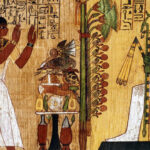Modern-day slavery, also known as human trafficking, is a global problem that involves the exploitation of individuals for financial gain. This issue is a serious violation of human rights and affects millions of people worldwide, primarily women and children. The United Nations defines modern-day slavery as “the recruitment, transportation, transfer, harboring, or receipt of persons by means of threat or use of force or other forms of coercion, of abduction, of fraud, of deception, of the abuse of power or of a position of vulnerability or of the giving or receiving of payments or benefits to achieve the consent of a person having control over another person, for the purpose of exploitation.”
Forced labor, human trafficking, and debt bondage are the most common forms of modern-day slavery, and they are prevalent in various parts of the world. These forms of slavery involve the exploitation of individuals for financial gain, often through the use of threats, force, or coercion.
Forced labor is a form of exploitation where an individual is forced to work against their will. The use of threats or physical force may be used to coerce the person to work. This form of exploitation is prevalent in various industries, including agriculture, manufacturing, and domestic work. Victims of forced labor may work in dangerous conditions and for long hours, with little to no pay.
Human trafficking is the transportation or recruitment of individuals for the purpose of exploitation. Traffickers may use deception, fraud, or force to transport victims across borders or within countries. Human trafficking can include forced labor, sexual exploitation, or other forms of exploitation. Women and girls are disproportionately affected by human trafficking, accounting for 71% of victims. Children are also victims of human trafficking, with an estimated 4.1 million children subjected to forced labor globally.
Debt bondage is another form of exploitation where a person is forced to work to pay off a debt or loan. The terms of the repayment are often unclear, unreasonable, or constantly increasing, trapping the person in a cycle of debt. Victims of debt bondage may work in various industries, including agriculture and manufacturing. They are often paid low wages, and their working conditions are dangerous and unsanitary.
The International Labor Organization (ILO) estimates that there are over 21 million victims of forced labor globally, generating an estimated $150 billion in illegal profits annually. The majority of victims are forced to work in industries such as agriculture, manufacturing, and domestic work, but also include the sex trade. Women and girls are disproportionately affected, accounting for 71% of victims. The ILO also reports that children make up a significant portion of forced laborers, with an estimated 4.1 million children subjected to forced labor globally.
There are many factors that contribute to the ongoing issue of modern-day slavery. Poverty, lack of education, and political instability are some of the key drivers of exploitation. In many cases, traffickers target vulnerable individuals, such as those living in extreme poverty, children, and women, who may lack access to education, healthcare, and other basic necessities. Additionally, the demand for cheap labor in various industries fuels the exploitation of vulnerable individuals.
The issue of modern-day slavery is further compounded by the rise of technology and the internet. Social media and online marketplaces have been used by traffickers to recruit victims and advertise their services, making it easier to conduct illegal activities and evade law enforcement. In addition, the COVID-19 pandemic has made vulnerable populations even more susceptible to exploitation, as economic instability and social disruption have increased the risk of forced labor and human trafficking.
Efforts to combat modern-day slavery have been ongoing, with many organizations and governments working to raise awareness, prevent exploitation, and support victims. The United Nations has declared July 30th as the World Day Against Trafficking in Persons to raise awareness of this issue. Many countries have also implemented laws and policies to prevent human trafficking, prosecute traffickers, and protect victims. However, despite these efforts, modern-day slavery remains a pervasive and urgent issue that demands continued attention and action from individuals, organizations, and governments worldwide.
To effectively address the issue of modern-day slavery, there is a need for a comprehensive approach that addresses the root causes of exploitation. This includes addressing poverty, improving access to education and healthcare, strengthening labor rights, and promoting gender equality. Additionally, there is a need for greater cooperation and coordination among governments, law enforcement, and civil society to combat human trafficking and support victims.
Therefore, forced laborMany factors contribute to the ongoing issue of modern-day slavery. Poverty, lack of education, and political instability are some of the key drivers of exploitation. In many cases, traffickers target vulnerable individuals, such as those living in extreme poverty, children, and women, who may lack access to education, healthcare, and other basic necessities. Additionally, the demand for cheap labor in various industries fuels the exploitation of vulnerable individuals.
The issue of modern-day slavery is further compounded by the rise of technology and the internet. Social media and online marketplaces have been used by traffickers to recruit victims and advertise their services, making it easier to conduct illegal activities and evade law enforcement. In addition, the COVID-19 pandemic has made vulnerable populations even more susceptible to exploitation, as economic instability and social disruption have increased the risk of forced labor and human trafficking.
Efforts to combat modern-day slavery have been ongoing, with many organizations and governments working to raise awareness, prevent exploitation, and support victims. The United Nations has declared July 30th as the World Day Against Trafficking in Persons to raise awareness of this issue. Many countries have also implemented laws and policies to prevent human trafficking, prosecute traffickers, and protect victims. However, despite these efforts, modern-day slavery remains a pervasive and urgent issue that demands continued attention and action from individuals, organizations, and governments worldwide.
To effectively address the issue of modern-day slavery, there is a need for a comprehensive approach that addresses the root causes of exploitation. This includes addressing poverty, improving access to education and healthcare, strengthening labor rights, and promoting gender equality. Additionally, there is a need for greater cooperation and coordination among governments, law enforcement, and civil society to combat human trafficking and support victims.

![]()








GIPHY App Key not set. Please check settings